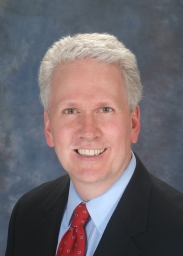Many are the individuals who claim they can spot a liar. It’s gotten even worse with the advent of multiple TV cop shows that depict characters with superhuman powers of nonverbal acuity.
Beware the self-proclaimed body language savant, for he may be lying to you. Oh, perhaps not intentionally in every case, but reports show there is some self-delusion at play.
About Those Airport Security Screeners
An article in The New York Times Science section from March 2014, “At Airports, a Misplaced Faith in Body Language,” casts doubt on our abilities — yes, yours and mine — to serve as accurate human lie detectors. As the article notes, even airport screeners from the Transportation Security Administration (TSA) who endured behavior observation training fared poorly in sorting the mendacious from the truth tellers.
There exists a plethora of pop psychology bombast about the supposed signals that leak from liars: Poor eye contact, sweating, and upward cast eyes, to name a few. The fact is liars know all about these indicators, too. Even if such signals proved reliable and easy to read, don’t you think that professional liars (e.g., terrorists, thieves, or that smarmy boss you once had) would devote time to learning how to mask them? I’ve yet to encounter a real-life Pinocchio who exhibits a no doubt, nose-growing deception cue.
Look for Patterns
Here in the real world, what can you do when your suspicions are aroused? All hope is not lost. Unfortunately, the Times article fails to point out that, while zeroing in on one isolated indicator proves a fool’s errand, it can be useful to monitor for patterns of deception. It’s quite true that someone who shifts his eyes upward during interrogation isn’t necessarily trying to mislead. If, however, that trait is part of a larger demeanor that exhibits other cues such as a rub of the nose, a shaky voice, or stumbling syntax, further investigation might be in order.
A falling barometer cannot predict an oncoming rainstorm with certainty. What it can do is place you on higher alert for threatening weather. Similarly, looking for patterns of deception rather than one lone signal is a much more reliable barometer of dissembling. Keep in mind, it’s the pattern that matters. Common sense tells us that when someone displays suspicious nonverbal patterns, added digging may be warranted. Probing questions are a good idea. So, too, is some independent sleuthing that could expose facts that may otherwise remain hidden.
Keep Your Antenna Up
In the end, you may or not be able to unearth lying with any degree of certitude. The good news is that you will at least be clued in to a potential problem and able keep your guard up accordingly.
One of the most reliable sources I’ve found along these lines is ex-FBI agent Joe Navarro. His book What Every Body Is Saying is a classic. His Twitter feed is also worth a look if you’re looking to stay up to date with developments in nonverbal communication.
Are you looking for a deeper dive into nonverbal communication? The just-published second edition of The Truth About Public Speaking: The Three Keys to Great Presentations includes a newly rewritten chapter on the subject.


Recent Comments